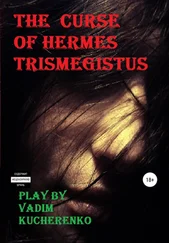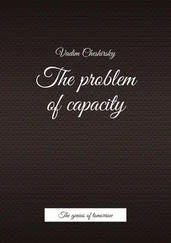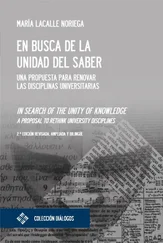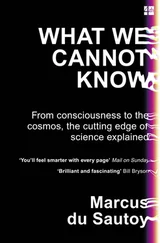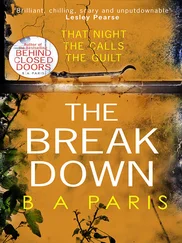The arrested were brought during the night before daybreak. They were forced to dig a pit. When the pit was half-done, [the Chekists] ordered the arrested to take off their clothes. The arrested started to scream for help. A group of the doomed was pushed into the pit and [the Chekists] began shooting. The rest of the arrested were forced to step down on the top of corpses and were killed the same way. After this the pit, in which still living wounded victims groaned, was covered with earth. 91
The VCheKa’s action was undertaken to terrify the Russian population, especially the intelligentsia. But the result was the opposite. According to Academician Vernadsky, the published list of names of the victims “had a shocking effect and produced not a feeling of fear, but of hatred and contempt” against the Bolshevik regime. 92Academy president Aleksandr Karpinsky, who had a reputation for loyalty to the Bolsheviks, sent Lenin a bitter letter in which he openly protested against the regime. He never again confronted the authorities so strongly as in the letter dated November 21, 1921:
Dear Vladimir Il’ich:
…I… can see how these events [arrests and executions] provoked a deep moral indignation because of their unjustified cruelty which was so poorly motivated and is harmful to our country and real international interests. The execution of scientists, …for instance, Prof. Lazarevsky or Prof. Tikhvinsky, who, according to the opinion of his colleagues, was not involved in any political activity, caused an irretrievable blow not only to his relatives, but to his numerous former and current pupils. Therefore, it creates inevitably hatred to the current regime, under which a group of persons not controlled by the highest state authorities can decide the fate of many citizens, extremely important for the state, without any elementary guarantees of justice. The majority of people understand that the only goal of the events was to terrify [citizens]. But you, with your life experience, know that such kind of a terror does not lead to this goal. On the contrary, giving a [human] life no value, it [the terror] can result in such events which will shake our already wretched, suffering country again and again.
The whole world sees you as the Head of the modern Russian State, and you know better than I which measures should be taken to protect your name and the state from new threatening troubles.
Yours sincerely respectful and completely devoted, Academician A. Karpinsky, President of the Russian Academy of Sciences. 93
Lenin did not answer the letter. The original has Lenin’s note: “To Comrade Gorbunov: Put this into the archive.” 94The terror continued. More people were arrested, mainly accused of being connected with the British and French secret services. 95In autumn 1921, twenty-five more people were shot as members of the PBO “plot.” 96On December 21, 1921, the Sovnarkom issued a special Resolution on Political Control in which the GPU was put in charge of secretly registering all former noblemen, industrialists, merchants, priests, and potentially anti-Soviet representatives of the intelligentsia. 97
After the Tagantsev case, at the beginning of 1922, Lenin concluded that it was necessary to send to exile “the writers and professors who are helping the counterrevolution.” 98The deportation was under the control of the Special Bureau in Charge of Administrative Exile of Anti-Soviet Elements and Intelligentsia. Created in November 1922 within the Secret Operational Directorate of the GPU, it existed for approximately four months 99and was headed by the specialist on intelligentsia, Yakov Agranov. Georgii Prokofiev, whose name we will encounter again in the Vavilov case (Chapter 4), was appointed deputy chairman of this bureau. A special Commission of the Politburo, headed by Dzerzhinsky’s deputy Iosif Unshlikht, approved lists of names created by the VCheKa.
In July–August 1922, the GPU prepared the first list of names for the Politburo meetings. At first the lists of names were scrutinized by the special Commission of the Bolshevik (Communist) Party Central Committee. 100On August 18, 1922, Unshlikht reported personally to Lenin:
According to your order, I’m sending you the lists of names of the intelligentsia in Moscow, Peter [i.e., Petrograd], and the Ukraine, approved by the Politburo. The operation was conducted in Moscow and Peter from the 16th to 17th, and in the Ukraine, from the 17th to 18th, respectively. Today the Moscow public was informed about the deportation abroad and they were notified in advancethat the unauthorized return to the RSFSR [Russian Federation] would be punished by being shot to death… I’ll send you the information about the deportation daily. (Bold in original) 101
On August 31, 1922, the lists were published in Pravda under the title “The First Notification in Advance.” 102The short article pronounced: “On the decision of the State Political Directorate (GPU), the most active counterrevolutionary elements among professors, doctors, agronomists, and writers were sent to exile to the northern regions. A part of them have been deported abroad.” In November 1922, the deportation of more than 300 scientists, philosophers, and writers from Russia started. Among them there were historian Sergei Melgunov, condemned at the Tactical Center trial, and the famous philosopher Semyon Frank, an uncle of the biophysicist Gleb Frank, whom we will meet in the following chapters. Many of those expelled were sent abroad against their will. 103
After Tagantsev’s case, the academy was left to rest in peace for a while. The new regime was more concerned with the situation at the universities. The political activity of students had been a constant problem of the tsarist regime. Now the Bolsheviks were facing the same problem. They needed professors loyal to the regime in order to create a new type of intelligentsia through the education of students from the worker and peasant classes only.
Historically, universities in Russia had been organized later than the academy: The first was Moscow University, established in 1755; in 1914, there were ten universities in Russia. Like the academy, they were imperial institutions, which meant that they were managed by the Ministry of Education, and appointments of the administration were approved by the tsar. This was changed after the Revolution of 1905. As a result of the revolution, on October 17, 1905, Tsar Nicholas II signed the imperial manifesto proclaiming Russia to be a constitutional monarchy. At a special conference, the new minister of education, Count Ivan Tolstoi, together with a group of university professors, reformed the University Statute and higher education on the whole. 104Now rectors were to be elected by the faculty councils (although the elected rectors would still be confirmed by the tsar). Also, police and troops could not enter the grounds of the universities without informing the rectors.
But in February 1911, after the police stormed Moscow University, everything changed. The newly appointed minister of education, Lev Kasso, dismissed the rector, his assistant, and his deputy. One-third of the professors and junior faculty members (131 in all, including 44 percent of the professors and lecturers in natural sciences) resigned immediately. 105Academician Vernadsky and future academicians Pyotr Lazarev and Aleksandr Vinogradov were among them. Many of those who resigned went to private schools and research institutions. Nikolai Koltsov, for instance, became a professor at Shanyavsky University, formerly known as Moscow City People’s University, which had been organized and funded by the Polish count and successful industrialist General Alfons Shanyavsky. The university accepted sixteen-year-old males and females of any religion and without any restriction or previous diploma. The right-wing nationalist newspapers called it “Jewish University” or “a network of Polish sedition in Moscow, the heart of Russia.” The university had two main departments: the Scientific-Popular Department, which was a high school, and the Department of Natural Sciences, History, and Philosophy, which provided university education. Besides that, there were several separate courses: for preschool education, library work, home education, and cooperation. In 1912, there were 3,600 students. 106
Читать дальше






